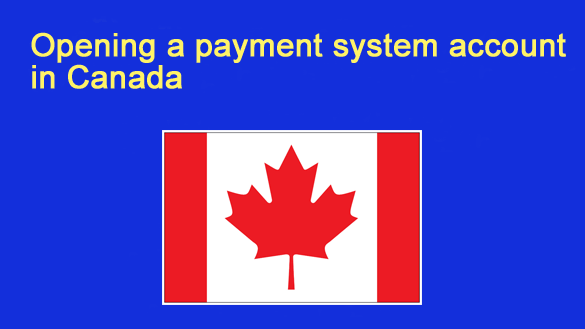 Opening a Canada payment system account is an essential step for commercials and people who are looking to conduct monetary transferring operations efficiently. Canada’s financial system provides a robust, regulated environment that guarantees safeguarding and obedience with national laws.
Opening a Canada payment system account is an essential step for commercials and people who are looking to conduct monetary transferring operations efficiently. Canada’s financial system provides a robust, regulated environment that guarantees safeguarding and obedience with national laws.
This overview covers the advantages, legal and regulatory requirements, step-by-step processes, associated costs, potential tax benefits, common challenges, and the importance of legal support.
Key Reasons to Open a Payment System Account in Canada
1 – Strong Regulatory Framework: Canada payment regulations ensure that all monetary service providers comply with stringent AML and KYC protocols, making it one of the most secure places to function as a transaction processor.
2 – Borderless banking solutions: region transferring systems often include facilitation for worldwide transactions via networks like SWIFT and SEPA.
3 – Enhanced Data Protection: Compliance with PIPEDA means individual and commercial data are protected, offering peace of mind to profile holders.
Regulatory Landscape and Compliance Obligations
Opening a payment system account in Canada involves adhering to an apprehensive set of legal criteria tailored to safeguard the monetary ecosystem. For corporate clients, documents such as valid passports, proof of assets, utility bills, AML/CTF policies, and monetary statements are typically required. People need to submit proof of citizenship, business models, and audited financials. Compliance with remittance legislations helps maintain security and aligns with federal and provincial laws.
Step-by-Step Process for Account Setup
1 – Prepare Required Paperwork:
• Corporate Clients: Collect papers including passports for directors, evidence of assets, AML/CTF policies, and other required paperwork.
• Private Clients: Prepare papers like proof of nationality, a comprehensive business model, utility bills, and monetary statements.
2 – Submit Paperwork to the Payment Service Provider:
• Upload the documents to the chosen payment service provider Canada platform.
3 – Complete and Verify Application Forms:
• Fill out notable forms and encompass any extra insight as requested.
4 – Paperwork Certification:
• Get demanded papers certified, which may comprise notarization for added legitimacy.
5 – Application Review:
• The payment service provider in Canada reviews the submitted paperwork for regulatory compliance.
6 – Remote Video Verification:
• Complete video authentication as part of the verification payment system setup Canada.
7 – Approval Notification:
• Wait for the provider’s approval notification after a successful review.
8 – Profile Activation:
• Follow the provider’s instructions to activate and start using the Canada payment system account.
Documentation and Fees Required for Application
• The monetary setup routine comes with certain fees:
• Submission Fee: One-time fee for processing the initial application.
• Setup Fee: Costs for establishing the account.
• Monthly Maintenance Fee: Recurring levies for maintaining the account.
• Transferring operation Levy: Levy per transferring operation, usually a flat rate or percentage.
• Service Fees: Extra costs for handling currency exchanges and chargebacks.
• Compliance and Authorization Fees: Costs related to AML compliance and document verification.
• Extra Costs: Fees for optional facilities and paperwork processing.
Key Challenges and Tips for Successful Account Opening
1 – Regulatory Complexity: The detailed obedience demands could be overwhelming. Partner with legal and business experts to navigate these complexities.
2 – High Fees: Mitigate costs by comparing different transaction processors and negotiating terms.
3 – Fraud Prevention: Use providers with robust fraud detection tools to ensure account safety.
4 – Technical Integration: Opt a provider that suggests seamless integration with your existing systems.
5 – Reliable Support: Opt for providers known for excellent customer support to ensure smooth operations.
Conclusion
Opening and managing such an account suggests significant benefits but comes with trials that demand strategic preparation. Guaranteeing obedience, conducting outcomes, integrating smoothly with existing systems, and safeguarding against fraud are essential for success.
Partnering with reliable service providers and seeking legal assistance can simplify the process, ensuring regulatory adherence and operational efficiency. With the right approach, businesses and individuals can navigate the complexities and capitalize on the opportunities within the regional resilient monetary ecosystem.